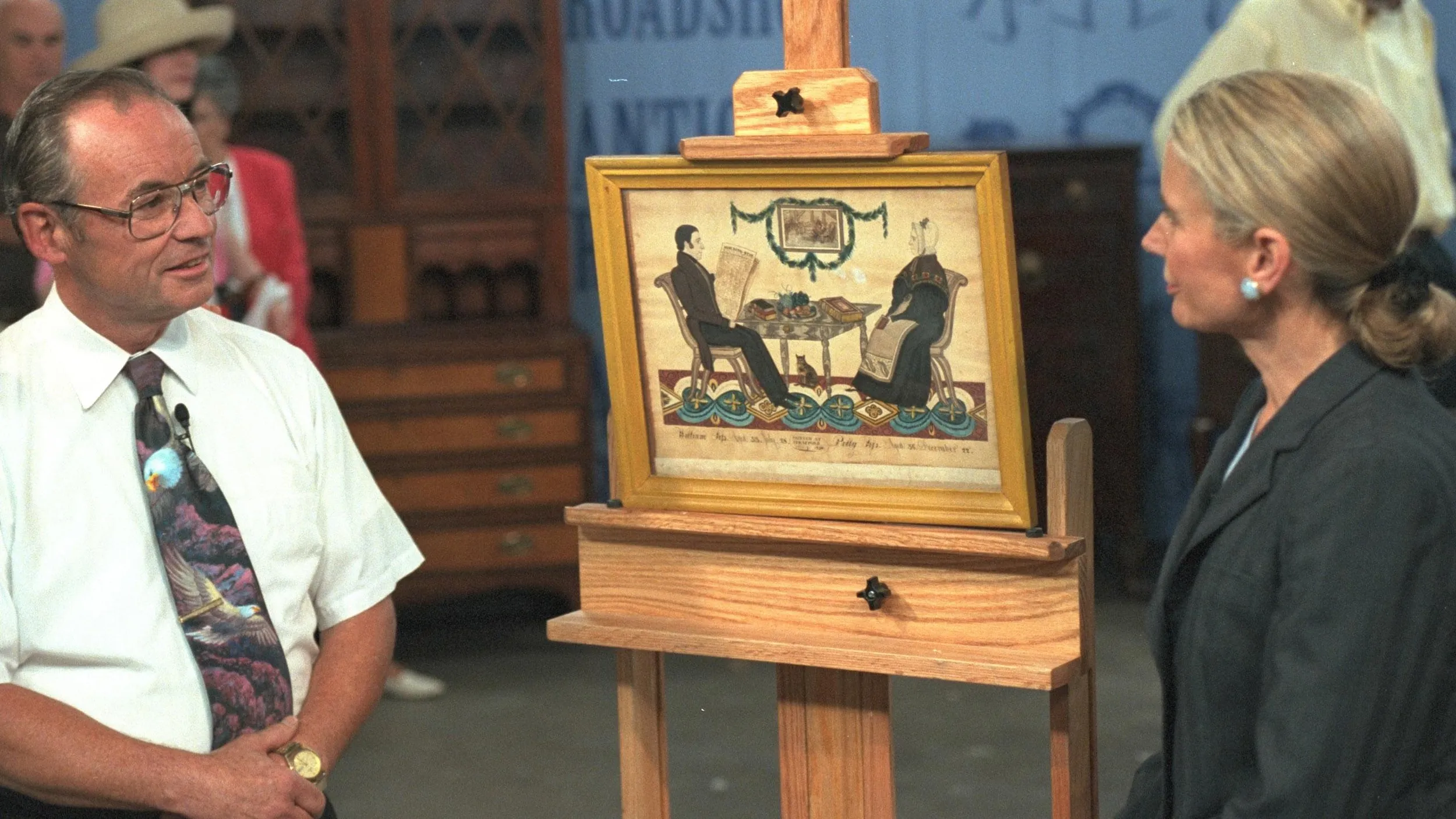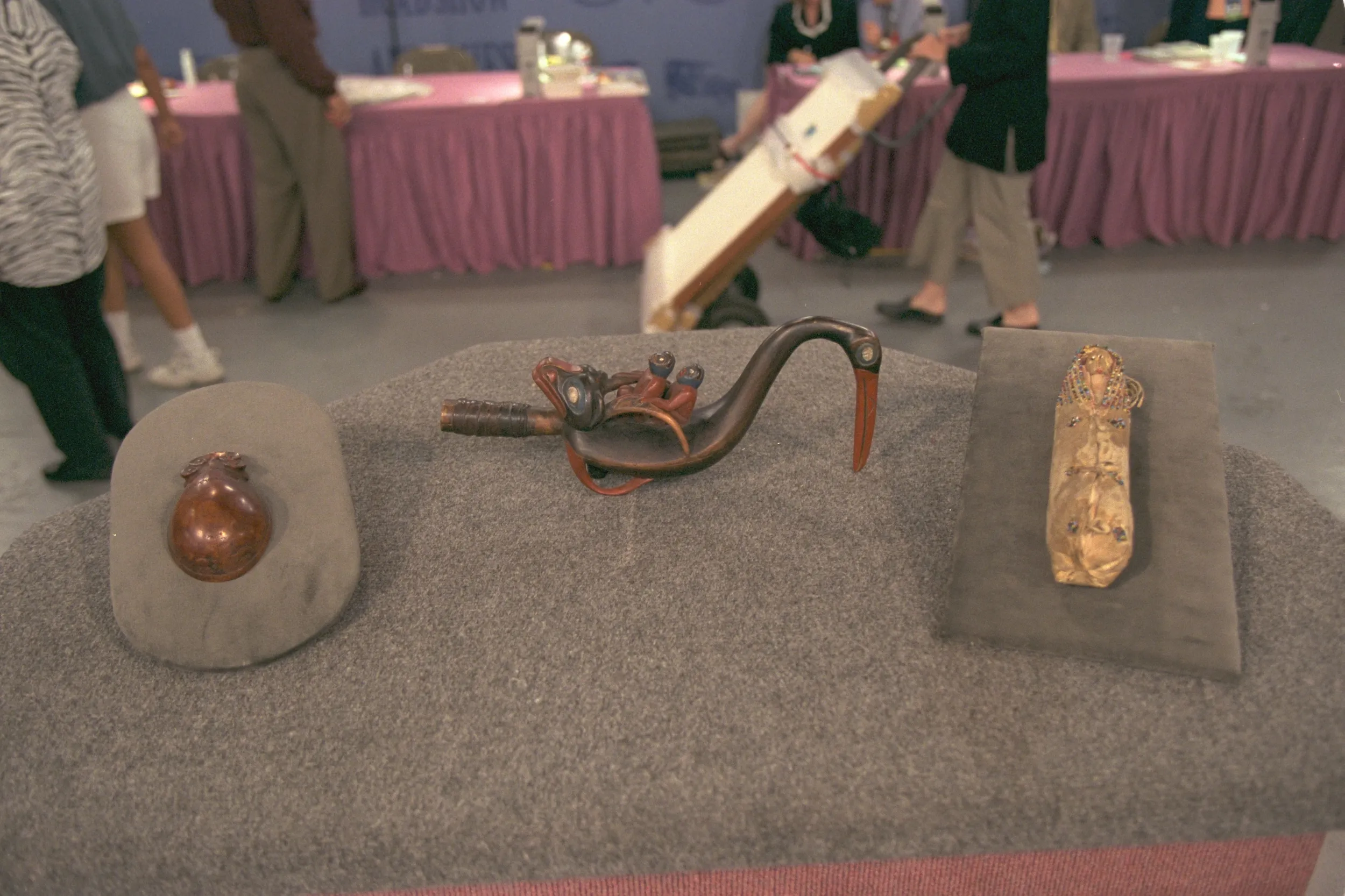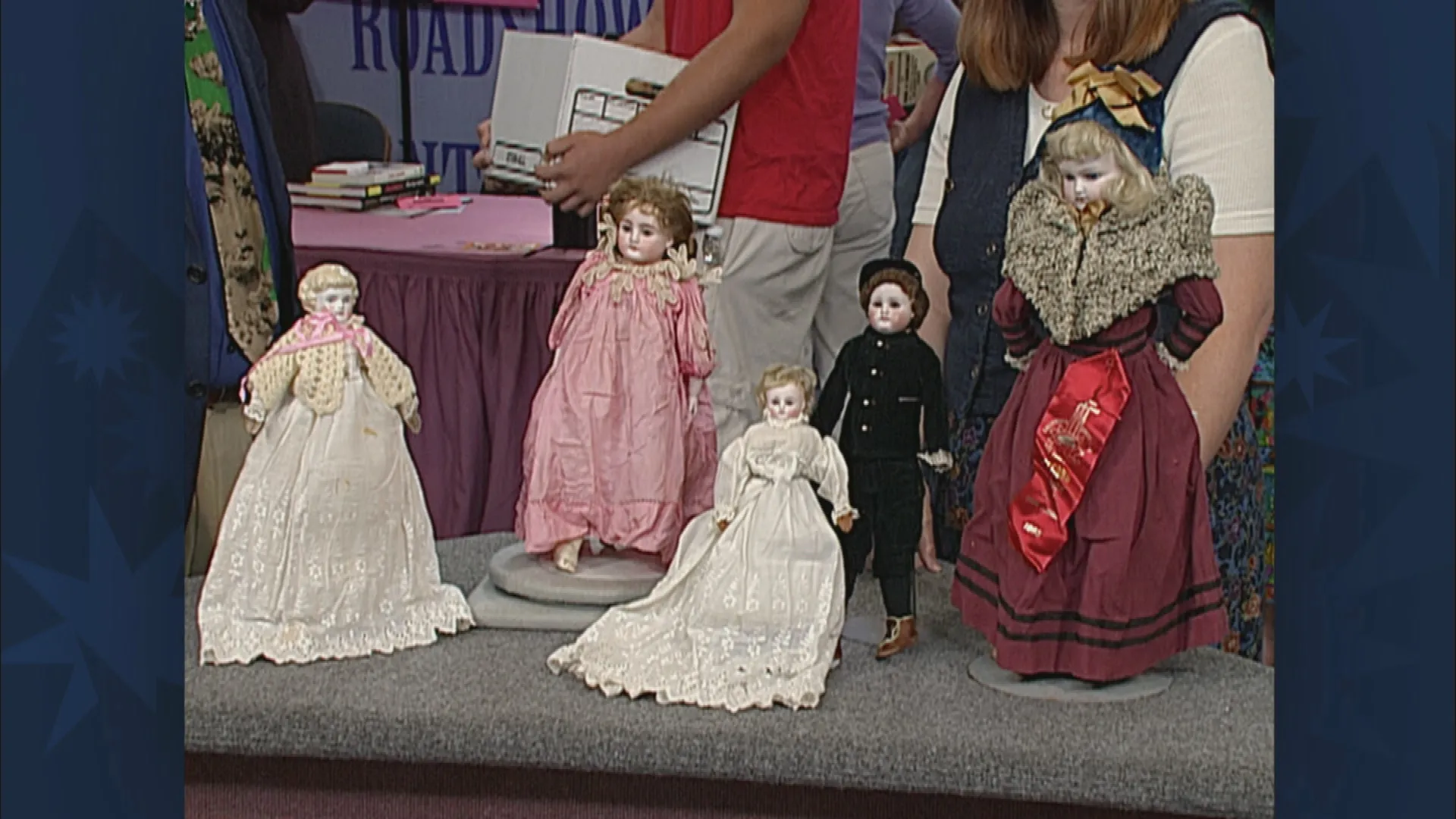APPRAISER: There was a letter in this trunk. It says, "There will be an exhibit "of a remarkable lady doll "with an intensive wardrobe. "She took first prize at a big bazaar many, many years ago." And this is in 1922. What is this letter in reference to?
GUEST: This doll right here, Dolly Varden.
APPRAISER: "Dolly Varden," so she has a name. And who did she belong to?
GUEST: My great-grandmother.
APPRAISER: And what was your great-grandmother's name?
GUEST: Thursa Gammons.
APPRAISER: Okay, and do you know when she would have received this particular doll?
GUEST: No, I don't.
APPRAISER: Looks to be probably in the 1860s, possibly. Does that make sense?
GUEST: That's when they made the clothing for her.
APPRAISER: Okay, and do you have any idea where the doll was made at all?
GUEST: France.
APPRAISER: Do you have any idea who made the doll?
GUEST: No.
APPRAISER: Okay, well, what it is, it's what's called a "French fashion doll," or "fashionable doll." If you look at her closely-- beautiful face, paperweight eyes. She's in her underwear and her hat right now. She has all her trousseau of clothes-- her parasols, her boots, handbags, letter racks, books for her travels. A very, very fine doll of the period, sort of like Barbie today. She was the Barbie of the mid-19th century. She has a little friend here, too. That's her friend from the same period. It's made by a company, Emile Jumeau, in Paris in the 1860s. It's very possible this doll was one of the sanitary fair dolls from the Civil War, which were benefits where people made clothing and accessories for a doll, then they were raffled off. You said something, that your grandmother won this in a raffle?
GUEST: My great-grandmother won it in a raffle.
APPRAISER: So it's probably a sanitary fair doll. There's some indication about Wisconsin. Do you know anything about that?
GUEST: That's where they made the clothes in a convent there-- that's all I know.
APPRAISER: Some of the clothes are American, some of the clothes are French. All the accessories are definitely French. Okay, any idea of the value of the doll?
GUEST: None at all.
APPRAISER: Okay, well, Dolly Varden herself is probably in the $6,000 to $8,000 range. Her little friend, little portrait Jumeau, is probably, oh, $4,000 to $5,000.
GUEST: Wow.
APPRAISER: Dolly Varden's clothes and accessories sort of push her up a little more in value. Any idea about that?
GUEST: None at all, none at all.
APPRAISER: Probably Dolly Varden and wardrobe, probably in the $20,000 to $25,000 range.
GUEST: Really, that much?
APPRAISER: Yeah, that much.
GUEST: Oh, my God.
APPRAISER: Her little parasol's worth at least $1,000.
GUEST: Oh, I didn't know that.
APPRAISER: The boots are worth $400 to $500. The petticoats are all $20, $30, $40. A complete fashion outfit is between $500 and $1,000. So you have a fortune in accessories that have stayed with this doll.
GUEST: Right.
APPRAISER: So I notice it's been stored in this trunk for a long time. If TV had smell-o-vision, you could tell this thing has been stored away forever and ever. You should probably conserve her, put her in acid-free paper. With all her clothes and accessories, she's worth between $20,000 and $30,000. I mean, she's a very lucky young lady. And you're a lucky young lady to own her.







